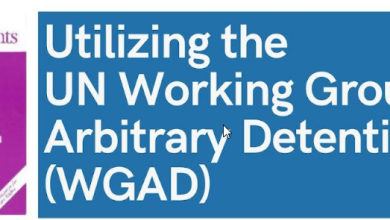 With two of seven rounds of the great Indian elections over, it is a very long wait for the results on June 4, when the world will know if an election campaign based on xenophobic hate can still sway the people of an India preparing to land a man on the moon next year.
With two of seven rounds of the great Indian elections over, it is a very long wait for the results on June 4, when the world will know if an election campaign based on xenophobic hate can still sway the people of an India preparing to land a man on the moon next year.
But perhaps no one will be as anxious about the results as India’s estimated 200 million Muslims and 30 million Christians. The numbers remain an approximation, extrapolated from the 2011 census. The 2021 census was not held in the wake of the Covid pandemic. It is not known when the census will now be held.
For the 543 seats in the Lok Sabha, the lower house of parliament, approximately 970 million people out of a population of 1.4 billion people are eligible to cast their vote. Among them would be about 22.31 million Christian voters. This is seemingly a large number, but Christians are all but invisible in the election debate.
Both communities, however, have borne the brunt of laws and programs enforced in the ten tumultuous years of Mr Narendra Modi’s rule as prime minister. So ruthless has been his grip on every aspect of life in the country that India is now described by international human rights groups as an “elected dictatorship”.
“The Hindu is in danger”
Expectedly, Mr Modi and his Bharatiya Janata Party (BJP) have reverted to their political strategy of pandering to the religious right sections of the country’s billion-strong Hindu community. He has roused them with slogans that their existence is threatened by a sharp rise in the Muslim population through birth, conversion and migrations from neighboring Bangladesh.
“The Hindu is in danger” was the catchphrase of the Rashtriya Swayamsevak Sangh (RSS), the 95-year-old militant Hindu group that launched the BJP. Mr Modi was a senior “pracharak” – full time RSS worker -since his teens, and till he was nominated by the group as chief minister of the western Indian state of Gujarat. Their cadres have grown exponentially in the last 25 years, making up the backbone of the political and electoral machinery of the ruling party.
“The Hindu is in danger” is now also a catchphrase on the WhatsApp groups run by the ruling party to target the hinterland and the villages as much as they do the high educated segments of society.
Mr Modi has used a tame media — two thirds of it owned by his cronies — and government agencies to build his own image as a savant ruler, a protector of the faith. Government and private media follow him faithfully as he is photographed doing yoga in the heart of the national capital, meditating in Himalayan caves, and most recently, diving to the sea floor off the coast of his native Gujarat state to worship what many believe is the lost capital of Lord Krishna, a major avatar in the Hindu pantheon.
Government funding went into infrastructure after a new temple to Lord Ram was built on the ruins of Babri Masjid, a mosque in the town of Ayodhya, dating back to 1528. The ancient town now boasts of a new airport, a railway station and hotel chains for local and foreign pilgrims and tourists. Many other temple towns have been upgraded. Many mosques of the Moghul empire are now targeted, the RSS alleging they were built on razed temples.
Failure to protect religious minorities
Inevitably, Mr Modi’s autocratic rule has sharply eroded constitutionally guaranteed freedom of religion and belief. “Anti-conversion laws” in 12 states which once targeted Christian evangelism have been amended, and weaponized, to also target Muslims who marry Hindu women. Penalties are heavy, with sentences that can go up to 10 years in prison.
International charity to Christian groups has been choked, and Church outreach to the poor, the Dalits — who were once considered as “untouchables” — and indigenous groups. In many ways, it also robs these groups, totaling some 23% of the population, of their own freedom of faith. They lose scholarships, jobs, and political representation, if they convert to Christianity or Islam.
“In many states, the criminal justice system increasingly reflects the discriminatory views of the BJP, targeting religious and other minorities and critics of the government, and is providing political patronage and cover for bigotry,” Human Rights Watch has said. The government has not only failed to protect Muslims and other minorities from attacks, but authorities in India have adopted laws and policies that systematically discriminate against Muslims and stigmatize critics of the government, it said.
Prejudices have infiltrated independent institutions, such as the police and the courts. The impunity empowers Hindu militant groups to threaten, harass, and attack Muslims and Christians with impunity. Christians have documented more than 50 attacks on churches, clergy and schools in the four months of 2024.
Confident of victory
Mr Modi says he is confident of a third electoral victory. He is challenged by a loose coalition of the once mighty Congress party with last ruled from 2004 to 2014, but is riven by factionalism, and motley group parties woven around caste loyalties and regional interests.
But he is taking no chances. His government has sought to dismember the Opposition, unleashing federal criminal investigation and intelligence agencies on the Congress, the fast emerging Aam Admi Party, and regional political parties.
As for the Muslims and Christians, they still have that ringing in their ears of the slogans at two major dharm sansads or religious parliaments, in the holy city of Haridwar on the banks of the Ganges, and at Raipur in the norther Indian state of Chhattisgarh. Scores of sadhus and sants — ascetics representing major Hindu sects and abbeys, swore “to annihilate the Muslims and Christians to protect Hinduism”. No one has yet been indicted for these speeches.
The hate, if not the exact words, find an echo in the campaign speeches of the prime minister, his home minister, and the senior BJP leaders. It remains to be seen if the dog whistle will work again.








